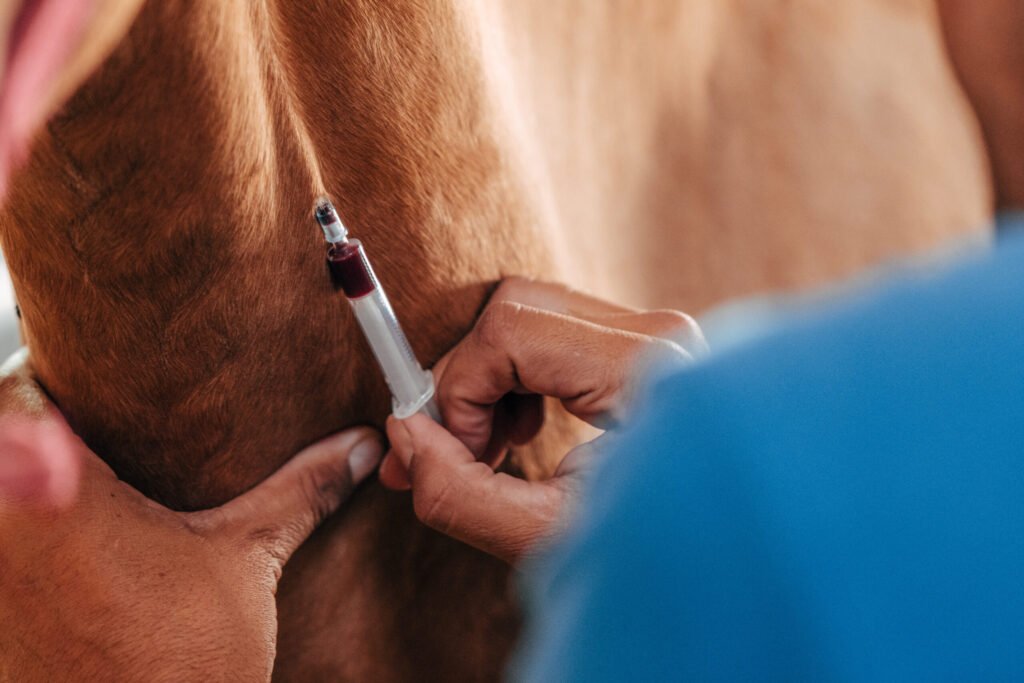Equine Infectious Anemia (EIA), also known as “swamp fever,” is caused by a lentivirus, which is similar in structure to the virus responsible for HIV in humans. However, the equine and human viruses are species-specific, meaning horses cannot catch EIA from humans, and vice versa. Despite this, EIA is a serious disease that horse owners need to be aware of, especially with the current outbreak and increasing cases in recent years.
What is EIA?
This disease affects a horse’s immune system and is usually spread through blood-sucking insects like large biting flies transferring infected blood from one horse to another. In some cases, people can unknowingly contribute to the spread by reusing blood-contaminated needles or other instruments between horses. The primary way the disease reaches different regions is through infected horses being moved to new areas.
A Changing Landscape
Currently, there is no cure or vaccine for EIA, making prevention and testing crucial. The epidemiology of the disease has been changing rapidly, which is a concern for experts like Angela Pelzel-McCluskey, the National Epidemiologist for Equine Diseases at USDA-APHIS-Veterinary Services. The disease landscape has evolved over the years due to human behavior.
Pelzel-McCluskey notes that the changing landscape of EIA is largely attributed to human behavior. The prevalence of EIA in the US has significantly reduced in the last 20 years, but recent years have seen an increase in cases due to changes in the disease’s epidemiology, primarily caused by incorrect handling of needles and syringes.
How Has Equine Infectious Anemia Changed?
Historically, EIA cases were often found in herds that were untested, but in recent years, there has been an increase in iatrogenic transmission caused by the improper use of medical equipment between horses. This increase in cases has raised concerns among experts in the field.
For more information, read the USDA report: 2023 Summary of Equine Infectious Anemia Cases in the United States
What Are the Symptoms of EIA?
The symptoms of EIA infection are only apparent when the virus is active, with fever being the first sign. As the condition progresses, symptoms may include anemia, weakness, reduced stamina, and internal organ damage. Unfortunately, there is no cure or vaccine for EIA, and infected horses must be either euthanized or placed in strict quarantine.
The Coggins Test
Diagnosing EIA starts with a Coggins test, which detects antibodies to the virus in the blood. Horses that test positive are usually euthanized or placed in lifelong quarantine to prevent the spread of the disease. Regular testing and isolation of infected horses are crucial in controlling the spread of EIA.
Travel papers aren’t meant to be a nuisance. They’re a line of defense against the spread of equine diseases and a way to track outbreaks.
Chris/adobe.stock.com

Having a current Coggins test and Certificate of Veterinary Inspection is essential to minimize the spread of disease and track outbreaks. These measures play a significant role in controlling and eradicating diseases among horses.
One needle, one syringe for every horse. Don’t reuse syringes, and if blood gets in the syringes, don’t reuse the needles.
-Angela Pelzel-McCluskey
Tips For Protecting Your Horse from EIA
Prevention is key when it comes to protecting horses from EIA. Proper handling of medical equipment, such as needles and syringes, is crucial in reducing outbreaks. Avoid sharing needles and syringes between horses to prevent the transmission of blood-borne diseases like EIA.

Sharing needles and syringes between horses can open your horse up to not just EIA, but other blood-borne equine diseases. charlymorlock/adobe.stock.com
Additionally, ensure that your horses have current Coggins tests and test new horses before introducing them to your property. Regular testing and proper management of biting flies can help reduce the risk of EIA transmission.
Resources for Horse Owners:
USDA – Animal and Plant Health Inspection Service: EIA Archives
Learn About Other Equine Diseases from USDA – APHIS
Stay informed about equine disease outbreaks with EDCC Health Watch text alerts: Sign Up Now
Sources:
Angela Pelzel-McCluskey, the National Epidemiologist for Equine Diseases at USDA-APHIS-Veterinary Services
Barb Crabbe, DVM, Horse&Rider contributing veterinarian
Eleanor M. Kellon, VMD, a Staff Veterinarian for Uckele Health and Nutrition, Inc.

